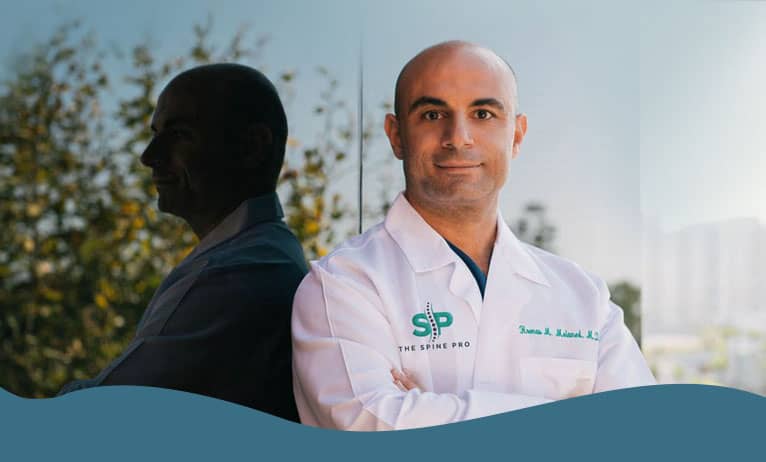Why Choose Minimally Invasive Spine Surgery?
You may have reached a point where your doctor recommends spine surgery as the best treatment option for your herniated disc or other painful back problem. Thanks to ongoing advances in medical technology and surgical techniques, you can often choose between traditional (open) surgery or a minimally invasive procedure that’s designed to get you back on your feet and feeling better faster.
Because of its many benefits, surgical expert, Dr. Melamed recommends a minimally invasive approach to back surgery whenever possible. He helps us understand why by discussing the differences between minimally invasive and open spine surgery.
How is minimally invasive spine surgery different than open spine surgery?
With traditional, or open, spine surgery, your surgeon must create a long incision that slices through skin, muscle, and other tissue to expose and repair the faulty spinal structures responsible for your pain and disability.
This traditional technique can get the job done, but it also causes significant trauma to the soft tissue structures adjacent to your spine.
With minimally invasive spine surgery, I create a few very small incisions near the spinal defect. I then insert specialized instruments, such as a tubular retractor, through these small incisions.
The tubular retractor comes in varying sizes and pushes the muscle and other supportive tissues out of the way, essentially creating a temporary tunnel through the tissue. This allows me access to the spine while eliminating the need to cut through muscle and other healthy tissue.
I can then remove diseased or defective spinal tissue and rebuild the damaged areas as necessary with instruments inserted through the tubular retractor, including a miniature camera that gives me a high-definition, real-time view of the surgical field. I also use X-ray imagery to guide my movements throughout the procedure.
Once I’ve completed the surgery on your spine, I remove the tubular retractor and the muscles slide back into place. In an open procedure, these muscles are cut and require a layered suture technique to help hold them in place as they knit back together.
What are the benefits of minimally invasive spine surgery?
Because of the small incision sizes and reduced trauma to surrounding tissue, MISS offers several potential benefits. For instance, it’s usually done as an outpatient procedure and typically eliminates the need for even an overnight hospital stay.
Other benefits include:
- Less blood loss during surgery
- Decreased risk of postsurgical pain, infection, and other complications
- Faster recovery and shorter rehab time since you don’t have to wait for muscles and large skin incisions to heal
- Improved cosmetic results due to smaller skin incisions
- Diminished reliance on pain medications after surgery
What conditions can you treat with minimally invasive spine surgery?
MISS won’t work in every case or for every problem. The only way to determine if it’s right for you is through a comprehensive evaluation.
However, it’s a highly effective solution for many back issues and can address problems throughout the spine, including those in your neck and lower back.
I often recommend MISS to treat:
- Degenerative disc disease
- Herniated discs
- Scoliosis and other spinal deformities
- Lumbar spinal stenosis (narrowing of the spinal canal)
- Vertebral compression fractures
- Spinal tumors
If you’re contemplating surgery to resolve a back issue, make an appointment for an evaluation with Dr. Melamed to discover whether you’re a candidate for the many benefits of minimally invasive spine surgery.






